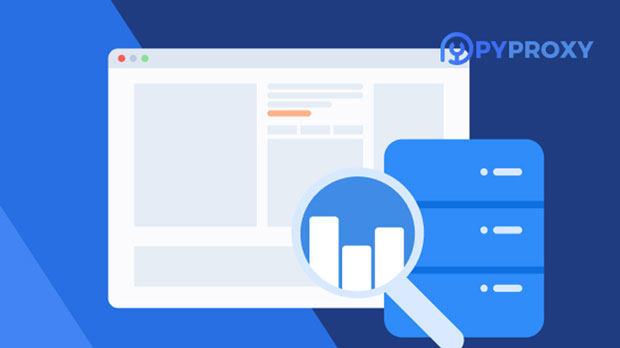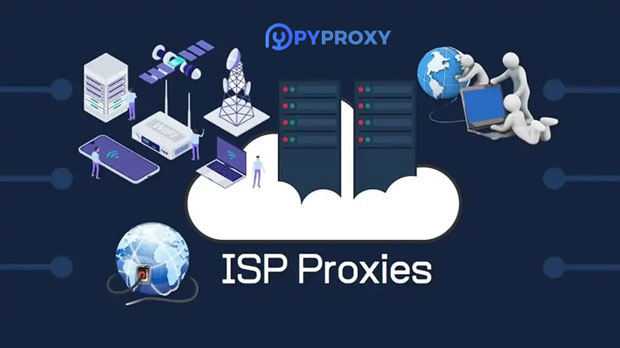What are the risks of using a free proxy server IP?
In today's digital landscape, free proxy servers are often seen as an easy solution for browsing anonymously or accessing geo-blocked content. However, using these free proxy servers comes with significant risks that users need to consider. Although they promise benefits such as enhanced privacy and bypassing restrictions, they come with hidden dangers that can compromise your online security, data privacy, and even affect your system's performance. This article will explore these risks in detail, helping users make informed decisions when considering proxy services. 1. Security Risks and Data ExposureOne of the most serious risks associated with free proxy servers is the potential for security vulnerabilities. Free proxies are not always secure, and some may even expose your personal data to malicious actors. Since these proxies often operate without proper encryption, your web traffic can be intercepted, allowing attackers to gain access to sensitive information such as login credentials, credit card numbers, and other private data. Many free proxy services do not offer the same level of protection as premium options. Without encryption or proper security protocols, users may unknowingly expose themselves to cybercriminals who can use their data for fraudulent purposes. The lack of secure connections puts you at risk of man-in-the-middle attacks, where an attacker secretly intercepts and alters communication between you and the website you're trying to access.2. Potential Malware and VirusesAnother significant risk when using free proxy servers is the possibility of downloading malware or viruses. Since free proxies are often operated by unknown or unreliable sources, they may contain harmful software that can infect your device. In some cases, these proxies may even serve as a gateway for installing spyware, adware, or ransomware on your system, leading to a serious loss of privacy or financial damage.Free proxy servers, especially those that do not have sufficient traffic or protection measures, are often targets for cybercriminals. They may inject malicious code into your web traffic, putting your system at risk without your knowledge. Moreover, because these proxies are typically not monitored, there is little to no accountability, making it easier for attackers to exploit vulnerabilities and distribute malicious software.3. Data Logging and Privacy InvasionWhile proxy servers are designed to protect user anonymity, free proxy services often compromise privacy by logging user data. This data could include your IP address, browsing history, and other sensitive information. Free proxy providers may collect this data for various reasons, such as selling it to third-party advertisers or using it to target users with intrusive ads.Even if a free proxy provider claims to be "no-log," it may still store some form of user data for a limited time. Without transparency in how your data is handled, it is impossible to be certain that your privacy is protected. By using free proxies, you are putting your personal information in the hands of unreliable operators, which could lead to privacy violations or data breaches.4. Unreliable Performance and Slow SpeedAnother risk of free proxy servers is poor performance. Many free proxies are not equipped with the necessary resources to handle large volumes of traffic efficiently. As a result, users may experience slow browsing speeds, frequent disconnections, and unreliable access to websites. This can severely affect your online experience, especially when engaging in activities that require high-speed internet connections, such as streaming or online gaming.Free proxies often lack the infrastructure that premium services provide, leading to delays and interruptions. These issues can become frustrating, making it difficult to maintain a smooth and uninterrupted online experience. Additionally, free proxies may have limited server locations, which means you may not be able to access certain websites or content that are region-locked.5. Legal and Ethical ConcernsUsing free proxy servers may also introduce legal and ethical concerns, especially if the proxies are used for illegal activities. Free proxy services are sometimes used to bypass geographical restrictions on websites or to engage in activities that violate local laws. This could include accessing content that is restricted in your region or engaging in online practices such as piracy or hacking.Even if you are using a free proxy for legitimate purposes, the provider might be operating in a legal gray area, which could put you at risk of violating laws or facing penalties. Furthermore, certain proxy servers might not comply with data protection regulations, which could expose you to legal consequences if your data is mishandled or exposed.6. Limited Customer SupportUnlike paid proxy services, free proxies typically do not offer customer support. If you encounter issues, such as connection problems, performance issues, or security concerns, you may not have access to timely assistance. This lack of support can be especially problematic if you are relying on the proxy for sensitive activities, such as online banking or working with confidential information.Without customer support, troubleshooting becomes more challenging, and you may be left to resolve issues on your own, often without the necessary technical knowledge. This can result in increased frustration and, in some cases, prolonged periods without access to the services you need.7. Ethical Issues with Free Proxy ProvidersMany free proxy providers may not have transparent business practices. Some providers may use their service to track user activity, generate revenue through selling user data, or exploit your browsing habits for marketing purposes. Without understanding how these free services are operating, you might be unknowingly contributing to unethical practices that affect your own and others' privacy.Additionally, some free proxy services may be involved in scams or fraudulent activities. Since there is little oversight, it is challenging to ensure that the operators are trustworthy and operate within ethical guidelines. Relying on such services could lead to financial loss, privacy breaches, or even identity theft.ConclusionWhile free proxy servers may seem like a convenient solution to maintain anonymity or access restricted content, they come with a variety of risks that users must carefully consider. From security vulnerabilities and malware to performance issues and privacy concerns, the drawbacks of using free proxies far outweigh the potential benefits. It is important for users to weigh these risks before opting for a free proxy service and to consider more secure, reliable alternatives that offer enhanced protection, support, and privacy.In the digital world, protecting personal information and ensuring online safety should be a priority. By understanding the potential dangers of free proxy services, users can make more informed decisions and avoid putting their privacy and security at unnecessary risk.
2025-01-23
























































